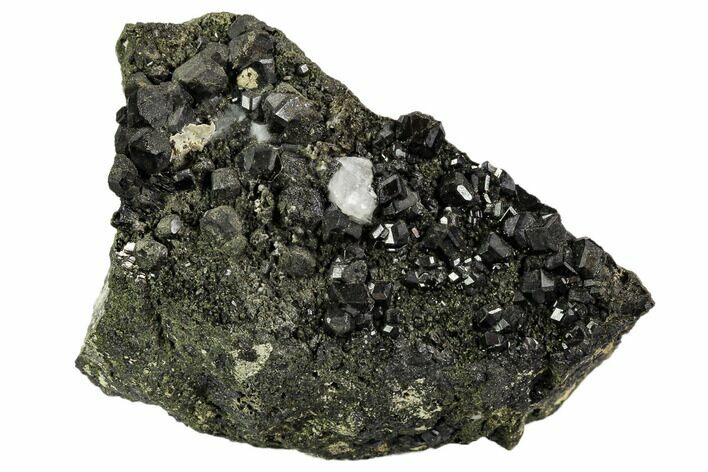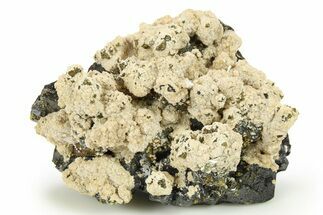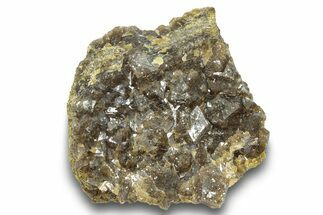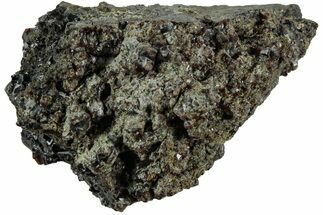This Specimen has been sold.
3.1" Black Andradite (Melanite) Garnet Cluster with Biotite - Morocco
This is a beautiful andradite garnet cluster of the melanite variety. This melanite cluster was collected near Imilchil, Morocco and the garnets are associated with biotite crystals. Small aggregations of what look to be pyrite can be found through the specimen, though the crystals also resemble marcasite and chalcopyrite.
Andradite is a species of the garnet group, and although not as well-known as some other types of garnets, such as Almandine or pyrope, it is the most lustrous. It tends to be opaque, so most andradite is not gemstone-quality. It occurs in skarns developed in contact-metamorphosed impure limestones or calcic igneous rocks; in chlorite schists and serpentinites; and in alkalic igneous rocks, often titaniferous.
Andradite comes in three varieties: melanite, colored by titanium substitutions for iron in its formula; topazolite, a rare and yellow-green variety; and demantoid, a striking green variety that is one of the world's rarest and most valuable gemstones.
Garnets are nesosilicates with the general formula X3Y2(SiO4)3. There are many species of garnet, including pyrope, almandine, spessartine, uvarovite, andradite, and grossular (varieties of which are hessonite, cinnamon-stone and tsavorite). Garnets are found in a wide variety of colors including red, orange, yellow, green, purple, brown, blue, black, pink, and colorless, though reddish shades are the most common.
Andradite comes in three varieties: melanite, colored by titanium substitutions for iron in its formula; topazolite, a rare and yellow-green variety; and demantoid, a striking green variety that is one of the world's rarest and most valuable gemstones.
Garnets are nesosilicates with the general formula X3Y2(SiO4)3. There are many species of garnet, including pyrope, almandine, spessartine, uvarovite, andradite, and grossular (varieties of which are hessonite, cinnamon-stone and tsavorite). Garnets are found in a wide variety of colors including red, orange, yellow, green, purple, brown, blue, black, pink, and colorless, though reddish shades are the most common.
About Pyrite
The mineral pyrite, also known as iron pyrite, is commonly referred to as Fool's Gold because its metallic luster and pale brass-yellow hue give it a superficial resemblance to gold. In the old mining days, pyrite was sometimes mistaken for gold.
It is the most common of the sulfide minerals with the chemical formula FeS2. Pyrite crystals occur in many shapes and habits, including cubes of all sizes, penetration twin cubes, pyritohedral clusters and as small druzy crystals that can exhibit a beautiful glistening effect.
The mineral pyrite, also known as iron pyrite, is commonly referred to as Fool's Gold because its metallic luster and pale brass-yellow hue give it a superficial resemblance to gold. In the old mining days, pyrite was sometimes mistaken for gold.
It is the most common of the sulfide minerals with the chemical formula FeS2. Pyrite crystals occur in many shapes and habits, including cubes of all sizes, penetration twin cubes, pyritohedral clusters and as small druzy crystals that can exhibit a beautiful glistening effect.
SPECIES
Andradite var. Melanite
LOCATION
Imilchil, Morocco
SIZE
3.1" wide
CATEGORY
ITEM
#107913
 Reviews
Reviews













